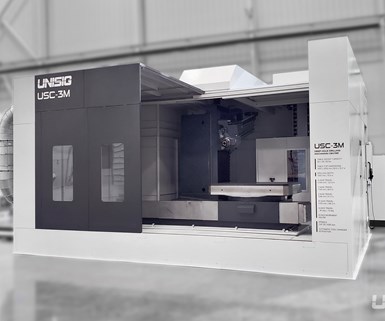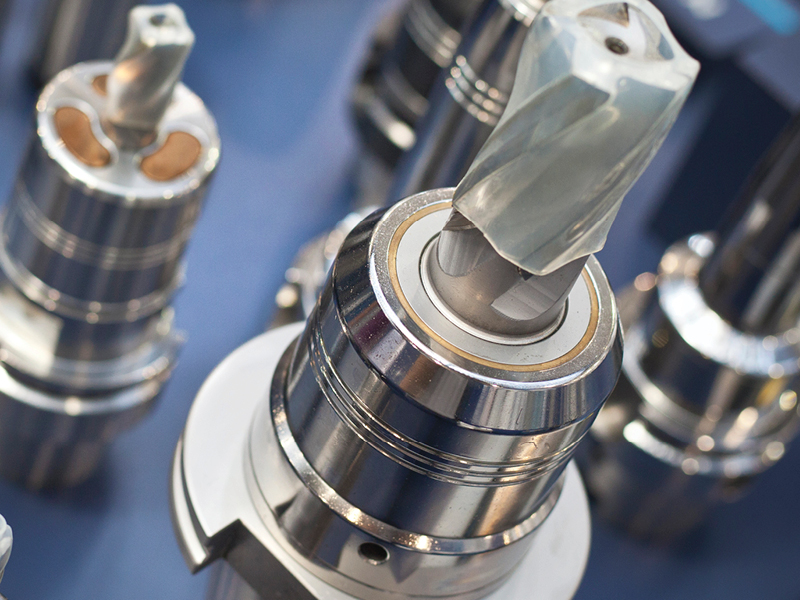Unisig's USC-2M, USC-3M Gundrilling Machines Designed for Productive Moldmaking
Unisig has introduced two models for its USC-M series designed to provide moldmakers with higher productivity in milling and deep-hole drilling applications.

Unisig has introduced two models for its USC-M series of machines for milling and deep-hole drilling in moldmaking applications. The USC-2M and -3M machines can mill and gundrill in various metals with a single universal CAT 50 spindle. The spindle’s 40 hp is said to provide high torque for aggressive metal removal and shorter cycle times. The use of a single spindle also reduces changeover times when switching between gundrilling and milling operations, the company says. A 60-position automatic toolchanger further minimizes nonproductive time. Both models can run oil and water-soluble coolant.
The USC-2M provides a nominal drill depth ranging to 1,500 mm (59.1"); the USC-3M’s drill depth ranges to 1,800 mm (70.9"). The two machines’ X-, Y- and Z-axis travels measure 2,100 × 1,500 × 850 mm and 3,100 × 1,750 × 1,300 mm, respectively. Both machine models feature an A axis with a range of +30 to -15 degrees as well as a B axis with 360,000 positions.
Both the USC-2M and -3M are built with fully enclosed machining envelopes installed above the shop floor to avoid time-consuming and costly below-ground installations.
RELATED CONTENT
-
Rolling Threads Has Advantages
With macros and canned cycles resident in the CNC on most contemporary turning centers, single point turning of OD threads can seem like almost a default process decision. However, for numerous applications, OD thread rolling has inherent advantages as an alternative to cutting threads.
-
A New Milling 101: Milling Forces and Formulas
The forces involved in the milling process can be quantified, thus allowing mathematical tools to predict and control these forces. Formulas for calculating these forces accurately make it possible to optimize the quality of milling operations.
-
Machining Dry Is Worth A Try
Reducing cutting fluid use offers the chance for considerable cost savings. Tool life may even improve.









 (1).1676494398075.png)

